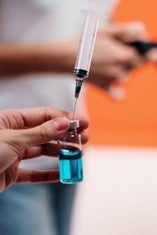Background
The ongoing threat posed by coronaviruses, including SARS-CoV-2 (severe acute respiratory syndrome coronavirus-2) that caused the recent COVID-19 pandemic, as well as past outbreaks such as SARS-CoV and MERS-CoV, have underscored the critical need for effective therapeutics. The evolving nature of these viruses, along with concerns about future outbreaks at regular intervals and the imperative to safeguard vulnerable populations globally have driven ongoing research and investment for the therapeutics market.
The COVID-19 pandemic caused by SARS-CoV-2 has led to a global health crisis, with evolving variants reducing the efficacy of existing vaccines. Recognizing the threat posed by various coronaviruses, there is an urgent need to develop antiviral drugs against a variety of coronaviruses. Central to this effort is targeting the viral main protease, Mpro, which plays an essential role in viral replication by processing polyproteins into their functional components. Thus, Mpro emerges as a promising target for the design and development of effective antiviral drugs.
Description of the invention
While COVID-19 vaccines target the spike protein of SARS-CoV-2, oral drugs can silence other enzymes of the virus and targeting main protease (Mpro) has emerged as a promising therapeutic strategy. A current market-approved drug, paxlovid, through its nirmatrelvir composition, targets the active site of Mpro to inhibit its enzymatic activity. While this therapy is proven efficient there are reports of resumption of SARS-CoV-2 infections. This indicates a need for development of alternative strategies to silence Mpro.
Researchers at the University of Waterloo have discovered a novel, non-naturally occurring, conformational state of the SARS-CoV-2 Mpro by utilizing a point mutation at H163A that shows an oxidized conformation with the catalytic cysteine in a disulfide bond. This conformational state has been hypothesized to exist in Mpro under oxidizing conditions as a means to circumvent immune response inactivation. Waterloo’s innovative site-engineering methodology has resulted in determining a resolved 3D structure of an inactive oxidized state of SARS-CoV-2 Mpro. This discovery enables the development of drug candidates that can lock Mpro from SARS-CoV-2 and homologous Mpro from other coronaviruses in an inactive state. It offers an ideal platform to develop small molecule therapeutics to inactivate the enzyme and, thus, control the replication and spread of the SARS-CoV-2 virus.
Advantages
- Novel conformational state of Mpro enzyme offers a new platform to design drugs to lock the enzyme in its inactive state.
- Novel site-specific engineering approach offers a very efficient route to synthesize the non-native enzymatic form(s) of Mpro.
- Engineering strategy can help with developing broad-spectrum drugs against all coronaviruses.
Potential applications
Pharmaceutical industry -> specifically for drug development against Mpro from SARS-CoV-2 and homologous Mpro from other coronaviruses.

Reference
10220
Patent status
US patent application 18/332,095
filing date June 9, 2023
Stage of development
Prototype developed and currently being validated.
Contact
Scott Inwood
Director of Commercialization
Waterloo Commercialization Office
519-888-4567, ext. 43278